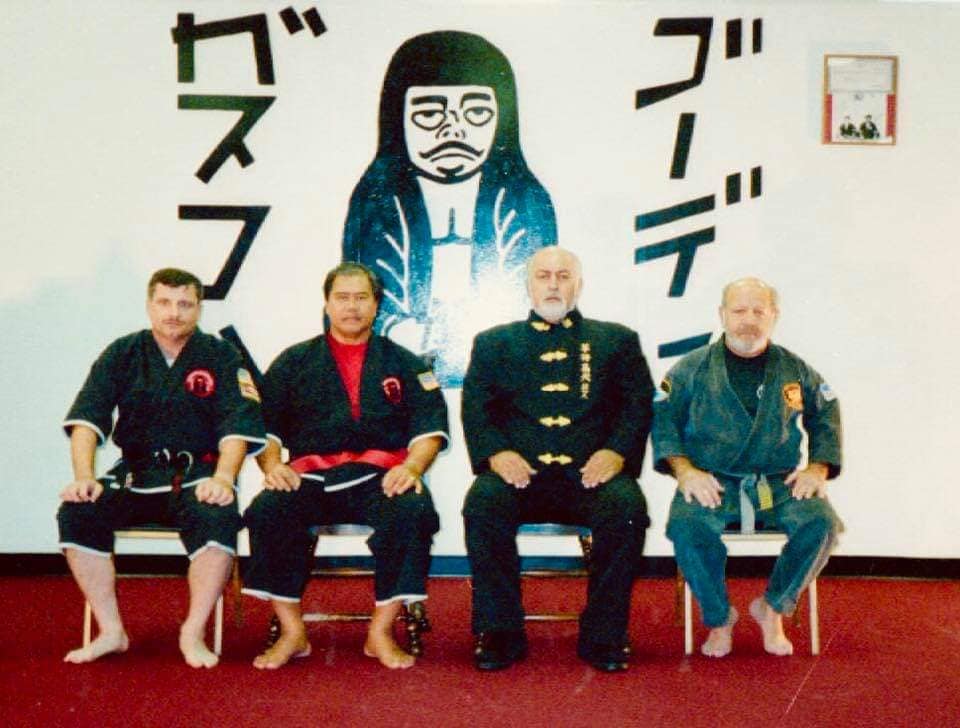It seems strange to say there are lost teachings for a relatively new style, such as Shaolin Kempo Karate. Many would claim otherwise, yet the astute observer will notice a difference in the curriculum and the oral tradition. When you take a step back from the rush to be Black Belt, an instructor, or a devotee to a particular lineage, you see pieces of the art most miss. I challenge you to think about the art and find insights into the things you have already learned.
Shaolin Kempo claims to be an art that is “50% punching and 50% kicking”. However, as any kyu-rank student will attest, there is an emphasis on punching and hand techniques. Is this a discrepancy? No, and here’s why.
Like many other styles, Tai Chi, to name one, hides many techniques within its kata sets. These hidden moves in kata are also valid in Shaolin Kempo. Combinations and kata hide kicking attacks and defenses. For instance, when a foot is unweighted, as in the cat stance, you can execute a kick. Therefore, many of the techniques with cat stances can include a kick to the groin or midsection. Additionally, the use of legs, knees, and feet in the trapping and grappling arts is essential to effective Kempo techniques.
A similar situation occurs with another aspect of Shaolin Kempo. Jujitsu is reportedly a core element of this style, yet very little time is spent on grab techniques and escapes maneuvers. Is this too a discrepancy? No.
Just like kicking techniques, kata hide grabbing techniques. Jujitsu, or grabs, are applied in a countless number of techniques. They are found in Combinations, during the initial attack and defense, and later on during the follow-through. A perfect example of this hidden quality occurs in combination 16. After the initial “Snapping the Twig” attack, the next technique is “ikajo” — an arm and wrist lock. Besides these hidden maneuvers, there is another interesting fact about the relation between Jujitsu and Kempo.
The real founder of Shaolin Kempo, Grandmaster Sonny Gascon, trained many years in Jujitsu. When he developed Shaolin Kempo (or Karazenpo Go Shinjutsu), he included his previous Jujitsu skills within the traditional curriculum. However, many “later” masters have allowed this portion of the Kempo curriculum to atrophy, thereby eliminating this vital skill from the Kempo repertoire.
In most Shaolin Kempo schools, there are six katas and five pinans. Students often ask, “Why aren’t there six pinans?” There are six pinans. Since the 1940s, this mysterious sixth form has adopted the moniker “the lost pinan.” One of the critical principles of Kempo is symmetry. This symmetry is reflected not only in the techniques but in the organization of the style.
Pinans originated in Okinawa, developed by Okinawans who were taught by Chinese kungfu masters. “Yasutsune Itosu (1830-1915), of the Shuri-Te system, developed the Pinan, peaceful mind, series of five forms around 1905.” (N. Paranto, 1996.) Early Kempo (from Okinawa and Japan) only had five pinans. During Karazenpo Go Shinjutsu curriculum development, a sixth pinan was added based on the Kajukenbo Monkey Dances.
One aspect of Kempo, which is lost and more challenging to discern, is its relation to the Filipino arts. For those artists who cross-trained in Filipino Kali-Escrima, you may have noticed a familiar flow of footwork and handwork. This commonality is no coincidence, nor is it parallel evolution. It stems from Shaolin Kempo’s roots and origins. Below is a quote about the founder of Shaolin Kempo.
While Victor [Gascon] was a child, his father ran chicken fights in the backyard. There always were several old and young Filipinos playing sticks during breaks in the chicken fights. Victor especially remembers them, showing the “dancing” footwork and empty hand applications. (Corrigan, 1995.)
Weapons training makes up a portion of a complete martial arts style. The practice exists within Kempo, yet — like so much of the style — it is left to atrophy. Without this portion of training, Shaolin Kempo is incomplete. It is vital to learn the Filipino weapon sets and the traditional Chinese weapon sets to understand Shaolin Kempo truly.
Why do portions of the Kempo curriculum disappear? Shaolin Kempo is becoming a diluted art form. The incomplete training of instructors leads to holes in the curriculum. Many schools rush aspiring students into instructor positions to establish their lineage and satisfy their egos. The patience expected of Asian students by their Asian masters is missing in America. This patience has its rewards — a complete martial art style.

The splintering of Kempo in the 1970s and 1980s has obscured the right lineage and roots of this style. Cross-training has also diluted the history of Kempo as instructors try to fill in missing gaps in their training. Hopefully, new organizations like the Karazenpo Go Shinjutsu Association can help educate and train others in the Shaolin Kempo system’s remaining portions.
The solution to this alarming trend is to recommit oneself to learning all about Shaolin Kempo — true or false. Then eliminate the wrong. Research the roots, discover other students of the style to exchange knowledge and techniques. Shaolin Kempo is not only a martial art style, and it is a family that needs to stay together.



